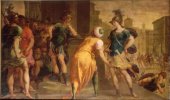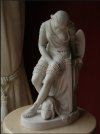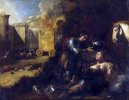Loxuru
Graf von Kreuzigung
Sofronia takes the blame for the stealing of the icon from the mosque. Old artwork showing that scene.
Sofronia is condemned to the pyre by King Aladine :
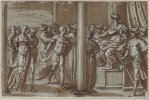

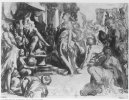
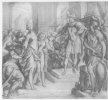
As the verdict is spoken, guards grab her, strip her and tie her.
Subsequently, she is brought to the pyre:
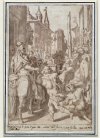
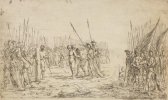
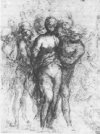
As Sofronia is tied to the stake, her lover Olindo tries to save her by taking the blame of the crime, but King Aladine condemns him to the pyre too.
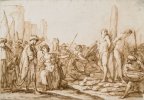
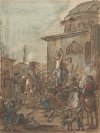
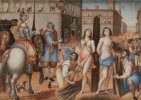
But Clorinda intervenes for their rescue. On the #8 she begs on her knees to the king, in most depictions however, she sits on her horse and looks down on Aladine. In fact she takes advantage of her knowledge, that the king has violated rules of Islam by putting a depiction of a human (the Virgin Mary) in a mosque. Meanwhile, she offers to fight for him, against the crusaders, an offer he cannot refuse, knowing her reputation as a warrior.
Sofronia is condemned to the pyre by King Aladine :




As the verdict is spoken, guards grab her, strip her and tie her.
Subsequently, she is brought to the pyre:



As Sofronia is tied to the stake, her lover Olindo tries to save her by taking the blame of the crime, but King Aladine condemns him to the pyre too.



But Clorinda intervenes for their rescue. On the #8 she begs on her knees to the king, in most depictions however, she sits on her horse and looks down on Aladine. In fact she takes advantage of her knowledge, that the king has violated rules of Islam by putting a depiction of a human (the Virgin Mary) in a mosque. Meanwhile, she offers to fight for him, against the crusaders, an offer he cannot refuse, knowing her reputation as a warrior.





